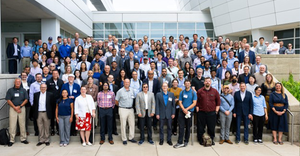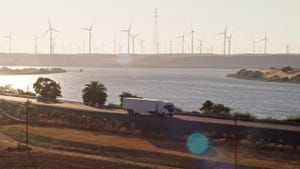PLA Scores Low in Latest Research
PLA, commercialized in the 1990s by Cargill and Dow Chemicals, is a light-weight semi-crystalline biopolymer, which comprises about 21 percent of the bioplastics market. A study by Eunomia Research & Consulting and the Plastic Pollution Coalition (PPC) is the latest to cast skepticism, reporting PLA, a decades-old, first-generation biopolymer, is fraught with upstream and downstream issues.

As polylactic acid (PLA) steadily infiltrates the market, scientists are taking a hard look to determine if this biopolymer is all that its developers say it is: a biodegradable, safe, sustainable alternative to traditional plastics. A study by Eunomia Research & Consulting and the Plastic Pollution Coalition (PPC) is the latest to cast skepticism, reporting PLA, a decades-old, first-generation biopolymer, is fraught with upstream and downstream issues.
PLA, commercialized in the 1990s by Cargill and Dow Chemicals, is a light-weight semi-crystalline biopolymer, which comprises about 21 percent of the bioplastics market. Used in sectors such as agriculture, medicine, packaging, textiles, and automotive, it’s still a tiny fish in the pond compared to petroleum-based plastics; but it’s projected to continue gaining traction. The authors of the study, titled “Bioplastics Are Trash: The Unforeseen Environmental Consequences of PLA from Production to Disposal,” caution against widespread adoption, stating that bumping production “will only exacerbate some of its damaging impacts.”
Among their key findings:
PLA production can generate hazardous industrial chemical emissions and pollute air, soil, and water.
Because it’s biomass-based, commonly made from cornstarch, sugarcane, or cassava roots, the material depends on intensive agricultural practices. Consequently, it can contribute to deforestation and compete for land that may otherwise be used to grow crops for food.
Biomass production to make PLA can generate negative environmental conditions such as eutrophication and acidification.
Branding PLA as “biodegradable” or “compostable” is misleading. Most composters reportedly reject the material because it does not break down in the timeframe required within their operations.
Beyond the timing issue, PLA often contains chemical additives and or nondegradable polymers in composites that can negatively impact the whole compost stream and, ultimately, the final product.
If it’s destined for landfill, methane emissions are a real consideration as is microplastics that are generated due to incomplete biodegradation.
PLA exacerbates pollution and environmental injustices, as it is produced near low-income “fence communities” of color, adding to existing land, air, and water pollution.
The microplastics issue is especially gaining the scientific community’s attention, as PLA breaks down into these 1-µm to 5-mm-sized fragments faster than conventional plastics. Like with its petro-based forerunner, PLA once reduced to minuscule pieces lingers, presenting human health and ecological concerns. Scientists conclude PLA-based microplastics are “severely toxic” to aquatic biota and might be a threat to people through the food chain.
Multiple studies have reported that microplastics persist in most environments and corners of the world, even in the ice blocks of the Antarctic. PLA, specifically, does not degrade in seawater. And studies have uncovered PLA microplastics in sediments, marine ecosystems, and wastewater treatment plants.
This biopolymer’s biodegradability depends on multiple features and circumstances, including its material properties, temperature, environmental conditions, pH, and humidity.
As more is learned about how it behaves, there has been work to try and improve its biodegradability and ultimately reduce its toxicity and overall environmental impact.
French biochemistry company Carbios has an enzymatic process that it says speeds up the breakdown of PLA to match industrial composters’ expectations. It also works in home compost settings, meaning it will biodegrade in almost any soil.
Other developers have come up with a few modifications that appear to improve its biodegradability, such as hydrophilic polymers, some research concludes. In one scenario PLA was blended with starch and wood flour; the degradation of the starch created holes in the material, allowing for the diffusion of water and, ultimately, for it to break down.
Other studies have reported that compatibilizers can speed degradation of PLA in blends and composites. But some of these add-ins have further inhibited the process; and of course, there is the question of whether some of them add toxicity.
There are some nuances:
Full biodegradation of PLA is possible in industrial composting facilities. But it requires very tight controls and extremely high temperatures.
Complete biodegradation also depends on product or package thickness. A produce bag may biodegrade in an acceptable time for composters, but foodservice ware will take substantially longer.
And while we don’t always get a clear answer around its full biodegradability, PLA does meet ASTM standards for industrial biodegradability. But it does not meet the modified standards for biodegradation in home composting. Here’s another twist and caveat: ASTM standards are based on laboratory tests, which do not necessarily mirror real-world composting conditions.
And while data increasingly points to that the material can harm soil and ecosystems, further investigation is required to definitely determine this and at what concentrations it could potentially do serious harm.
Today, the U.S. draws some of the largest PLA producers in the world, with Minneapolis-based NatureWorks ranked as the heaviest hitter domestically and globally. The company has a U.S. facility with a 165,000-ton capacity and is ramping up with plans to build a large-scale plant in Thailand.
LG Chem in Korea and Chicago-based food processing company ADM plan to build two PLA plants in the U.S.
About the Author
You May Also Like




